Announcements
Bookmark this page as your main entry point to the course website. That way, you’ll be sure to see any changes and other information I’ve posted here.
Ultimate Deadline for Late Papers and Resubmissions
18 December 2022
As previously announced in class, the absolute deadline for all late papers and reversible deduction resubmissions is Monday, December 26. No papers or resubmissions will be accepted after that date unless an incomplete has been mutually agreed prior to that deadline owing to emergency circumstances.
CURRENT ANNOUNCEMENTS
Final exam grades posted
22 December 2022
The grades for the final exam have been posted on the My Grades page.
Please upload any missing essays or resubmissions for reversible deductions to BlackBoard by end of day Monday so that your grade reflects all it can reflect.
Final course grades will be posted to the My Grades page and CUNYfirst on Tuesday.
ARCHIVE
Position Paper grades and markups posted
19 December 2022
The grades and markups for the Position Paper are posted on the My Grades page on the course website.
If you have any questions about the grades, comments, or deductions, please don’t hesitate to seek me out by email.
Reversible deductions. Some of you may find that you received “reversible deductions” for issues relating to formatting and citations. The good news is, those are points that you can get back. Check the cover page of your markup to see if there are any check marks and points taken off next to the reversible deductions. If there are, I made notes on the cover sheet or in the essay about the issue, and included a handout with the requirements.
Please resubmit your essay to BlackBoard with those problems fixed, and I’ll be in a position to reverse those deductions. Only reversible deductions can be reversed, so don’t resubmit for anything other than reversible deductions.
Missing essays. If you have not gotten your paper in, please do so as soon as you can. In terms of your course grade you’re better off with any grade, even with a lateness penalty, than a zero for the assignment. Remember also that the lateness penalty is capped at a maximum of 30 points, so turning your paper in, even very late, is better than not doing so.
Quiz #9 grades and markups posted
7 December 2022
The grades and markups for Quiz #9 are posted on the My Grades page on the course website. I strongly recommend spending a moment to take a look at my commentary on the quiz, as I use these to emphasize the key take-aways from last week’s topics:
- The Quiz Notes for Quiz #9 are live on both the Quiz Notes page and the Print/PDF page.
- The Video Recap for Quiz #9 is live on the Videos page.
Welcome to Week 15!
12 December 2022
Our class meetings are completed save for the final exam on Thursday. Please make sure to consult the notes and advice regarding the exam on the Announcements page, and the review materials posted on the Exam page.
Email me with any questions at all that you might have about the exam or the course materials or anything we’ve been studying. Good luck!
Welcome to Week 14!
5 December 2022

This week we’re sort of putting the Greek and Roman worlds in perspective, looking at how the Hellenistic world, which the Romans absorbed, looked at gender and the responsibilities people had as men and women toward the strength and persistence of their society. What essential ideas stand out to you about the complementary roles of men and women in the Hellenistic world? How much of that carried over to the Greco-Roman world that came after?
Also this week you’re completing your position papers. What did you learn from your research and analysis that you’d like to share with the rest of us? How has your perspective on gender in the ancient world changed or been reaffirmed as you explored your topic?
Looking forward to an interesting discussion. Please make sure to attend and help bring our semester’s worth of explorations and insights together into focus. See you Thursday!
Reviewing for the Final Exam
28 November 2022
I’ve updated the final exam page. On this page you’ll find information about the final and review materials. The exam will take place Thursday, December 15 from 6:15 to 8:15 p.m.
The review sheet is not designed to be a list of answers so much as questions you can use to guide you toward the areas you want to focus on in your review. As you read through the questions on the review sheet, those you have a sense of how you might answer are lower priority for review than those questions you’re not sure how you would answer; those you’d then want to go back and spend some time reviewing in your notes, the readings, the videos, quiz notes, and class discussions.
Also note that the terms are a useful way of finding concepts you need to go back and review, so I’d advise stepping through the terms at the end of each topic and making sure you have a sense of what they mean and why we’re studying them.
To prepare for the essays, I suggest that you focus on what you would consider to be four or five of the major themes of this course, and think about possible questions that relate to those topics across the periods and transitions we’ve explored. For the essay you’ll be asked to give three examples, so you can sketch out a question about a recurring topic in the course, your perspective on that question, and three similar or contrasting examples of that demonstrate that perspective.
Please take a look at the review sheet for details on the exam’s content and structure. Once you’ve read through the review sheet, if you have any questions about the exam or about any of the topics covered in it, please don’t hesitate to come to me or bring them up in our next class.
To get to the final exam page, click on “Exam” in the navigation index, or follow the link to the “Final Exam page” below.
Welcome to Week 13!
28 November 2022
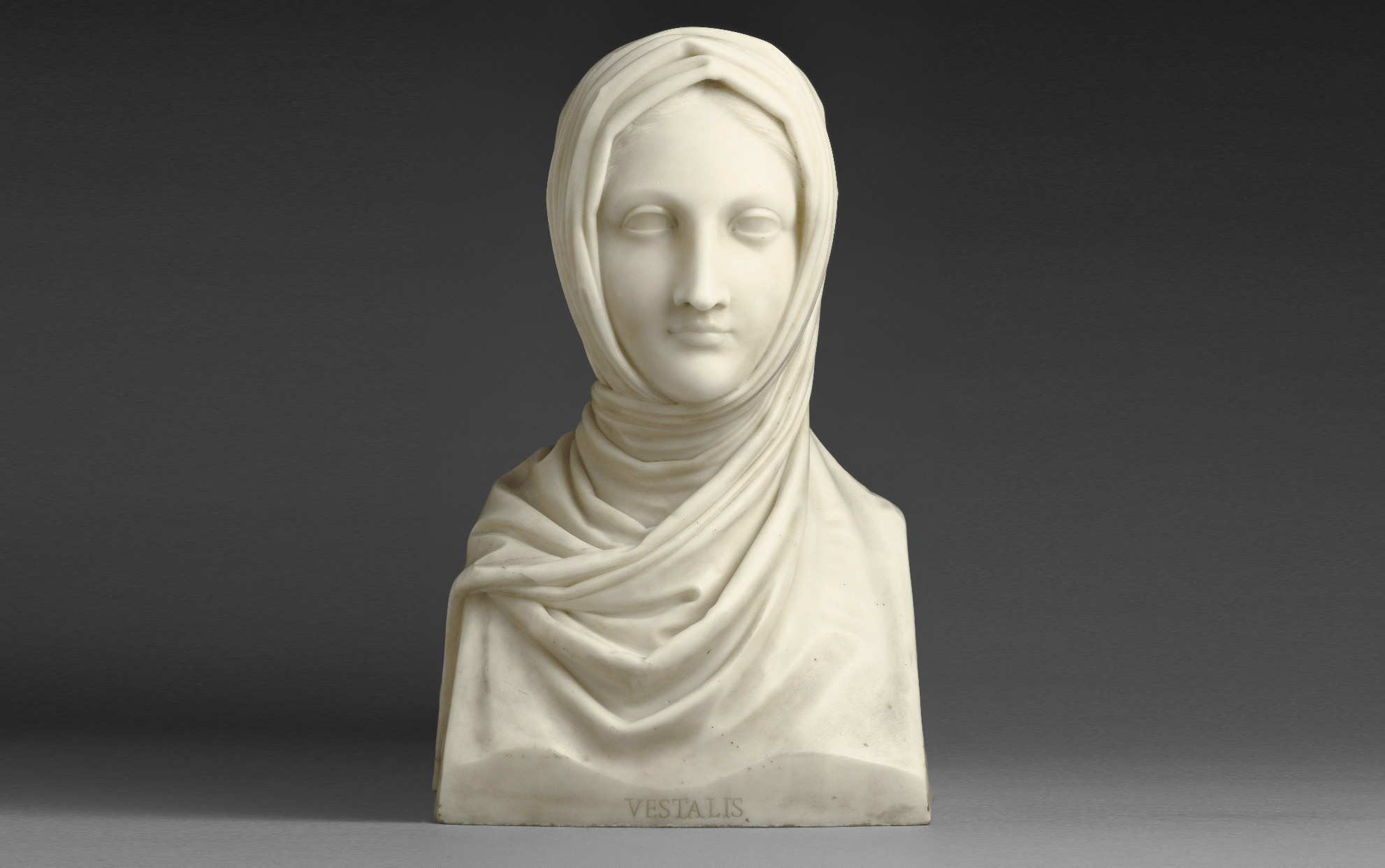
This week we’re discussing the ways in which women were involved the Roman religion. The religious practices and superstitions of the Romans themselves are interestingly peculiar, and the special cult of priestesses known as the Vestal Virgins, who were entrusted with the guardianship of the eternal flame, is distinctive. What do you think the existence and importance of the Vestals tells us about how the Romans thought about gender and the gods? The Chief Vestal is an unusual figure, too, representing the pure separateness of the Vestals and the status and responsibilities of a Roman noble matron. What else strikes you as telling about the prominence of women in Roman religion?
Personal letters are a great resource for historians because they offer a subjective, unguarded, and first-hand view of cultural norms and idiosyncratic relations to them. What stands out to you from Pliny’s letters about how he talks about women he admires?
Finally, Cato’s speech on the Oppian Law is in defense of conservative values, but it has an impact on wealthy women in Rome, who had been agitating politically to wear ornamentations again, even appearing in mass demonstrations in the Forum. What’s Cato afraid of?
Looking forward to an interesting discussion. See you Thursday!
Quiz #8 grades and markups posted
24 November 2022
The grades and markups for Quiz #8 are posted on the My Grades page on the course website. I strongly recommend spending a moment to take a look at my commentary on the quiz, as I use these to emphasize the key take-aways from last week’s topics:
- The Quiz Notes for Quiz #8 are live on both the Quiz Notes page and the Print/PDF page.
- The Video Recap for Quiz #8 is live on the Videos page.
Notes and reminders about the Position Paper (due Monday, December 5)
21 November 2022
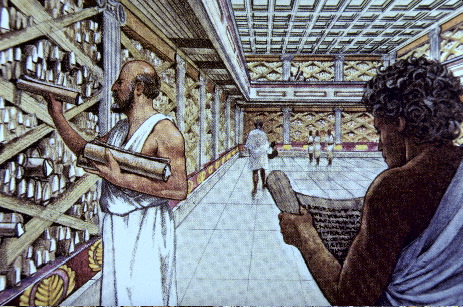
Here are a few brief reminders about the Position Paper, which is due very soon on Monday, December 5.
Watch the video. Make sure to watch the overview video, since that tells you exactly what I am looking for. It’s on the Position Paper page.
Thesis statement. Make sure you have an introduction with a thesis statement (your argument asserting your position on the question/problem being addressed) and a body that described and discusses three examples from the sources supporting your thesis statement. For models and explanations on how to do this, see “Writing a Position Paper” (a.k.a. “The Elephant Pamphlet”), which is on the Resources page.
Sources.
- You must use at least three sources, which can be primary or secondary; tertiary sources (including textbooks and most web pages) are not allowed. See the Sources page in the Research and Citations Center for more.
- All assertions must be supported by evidence.
Requirements for all papers. You must adhere to the requirements for all papers (listed on the Essay Musts page). Not meeting the requirements for all papers will mean a lower grade.
Template. There is an MS Word template already set up with some of the formatting I require on the Resources page. If you use Word I strongly recommend making use of this template. There is also a Google Docs template.
Late papers. As per the syllabus, late papers are marked down by ten points per class meeting, up to a cap of thirty points. Avoid this penalty and block out the time you need to prepare, write, and review your paper so that it can be submitted on time.
BlackBoard. All essays are uploaded to BlackBoard. Look for “Upload Assignments Here” in the left-hand menu. Your essay needs to be uploaded as a Word (preferred) or PDF file attachment, not pasted in as text submission. If you use a browser-based word processor, download or export to a Word document and upload that.
I’m happy to discuss any aspects of your sources or the paper, so please come to me if there’s anything you’re not sure about. I’m looking forward to hearing your interpretations of your chosen depictions of gender in the ancient world!
No meeting this week. Enjoy your holiday!
21 November 2022
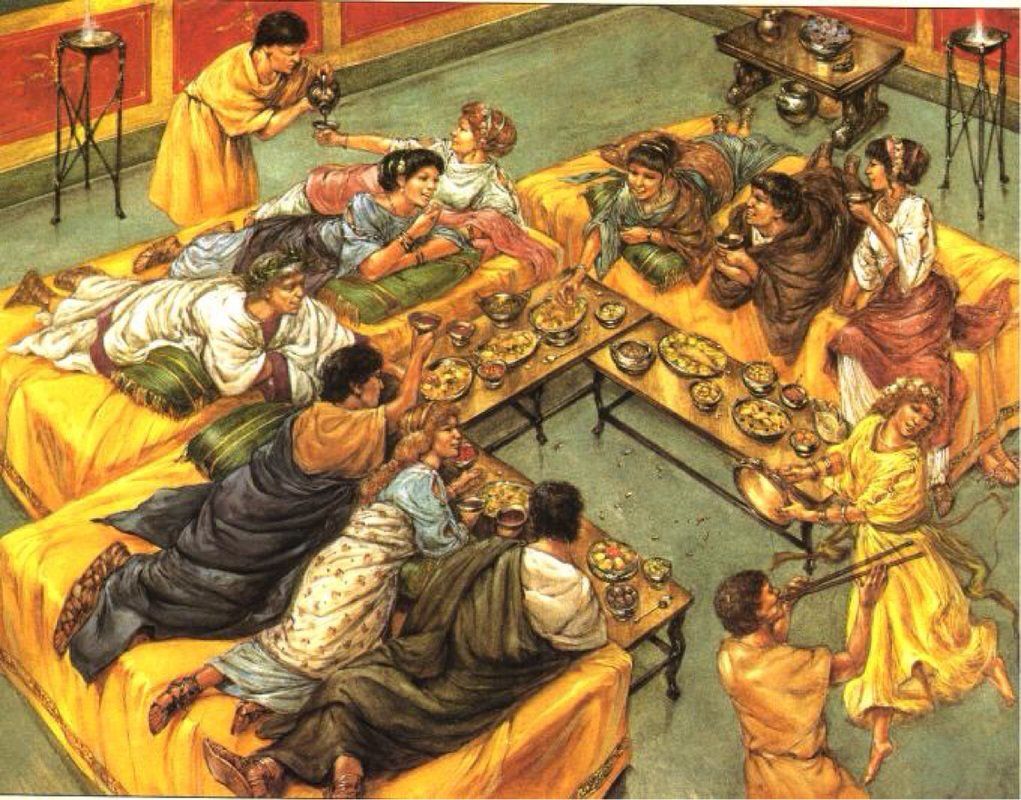
As you know we are not meeting this week, but please continue working on the research and composition of your position paper.
Enjoy your holiday and I’ll see you all next week!
Quiz #7 grades and markups posted
14 November 2022
The grades and markups for Quiz #7 are posted on the My Grades page on the course website. I strongly recommend spending a moment to take a look at my commentary on the quiz, as I use these to emphasize the key take-aways from last week’s topics:
- The Quiz Notes for Quiz #7 are live on both the Quiz Notes page and the Print/PDF page.
- The Video Recap for Quiz #7 is live on the Videos page.
Welcome to Week 12!
14 November 2022
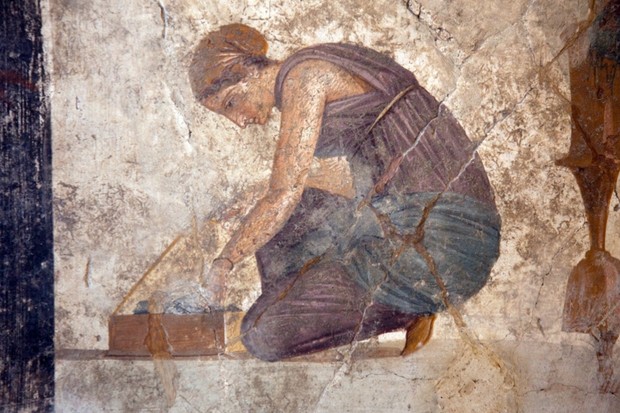
This week we’re attempting to get at the Roman sense of gender division and gender norms below the upper classes. How do you think things are different for women below the nobility? What do documents like the Twelve Tables tell us about how genders and families related to each other? What’s your sense of what ideas the Romans in general shared when it came to the importance of women to the survival of Rome?
Looking forward to hearing your thoughts and reactions. See you Thursday!
Proposal responses posted
10 November 2022
The proposal responses are posted on the grading page. I am very sorry for my tardiness in completing this work. Let me know if you would like the response PDF emailed to you directly.
I am happy to discuss your research options and how you approach your arguments further in office hours or via email. I’m really looking forward to these papers; there are some strong topics with lots of possibilities, and I’m going to enjoy exploring them with you in your finished submissions.
Links: Here are a few links you might find useful:
- Online Ancient Texts and Translations: Links to online ancient texts in translation.
- Leonard Lief Library: CUNY OneSearch access. Do your search and then filter for Full-Text Online and Peer Reviewed Journals. You can also filter Resouce Type to Articles, Books, and Book Chapters.
- Attalus Index of Names: enter a name and matching names will appear, with ancient textual references to that person organized chronologically by event and linked to the actual ancient texts.
- LacusCurtius: Into the Roman World: One of the best archives of ancient Roman texts in English translation.
- WorldCat: Bibliographic info on practically any book.
Important reminder about sources: You may use only primary and secondary sources for this paper. You need 3 sources minimum; the mix of primary/secondary will depend on the topic. Pomeroy’s Goddesses, Whores… counts as a secondary source, as do all of the articles assigned for the course; the excerpt from plays, etc., are primary sources.
Welcome to Week 11
7 November 2022
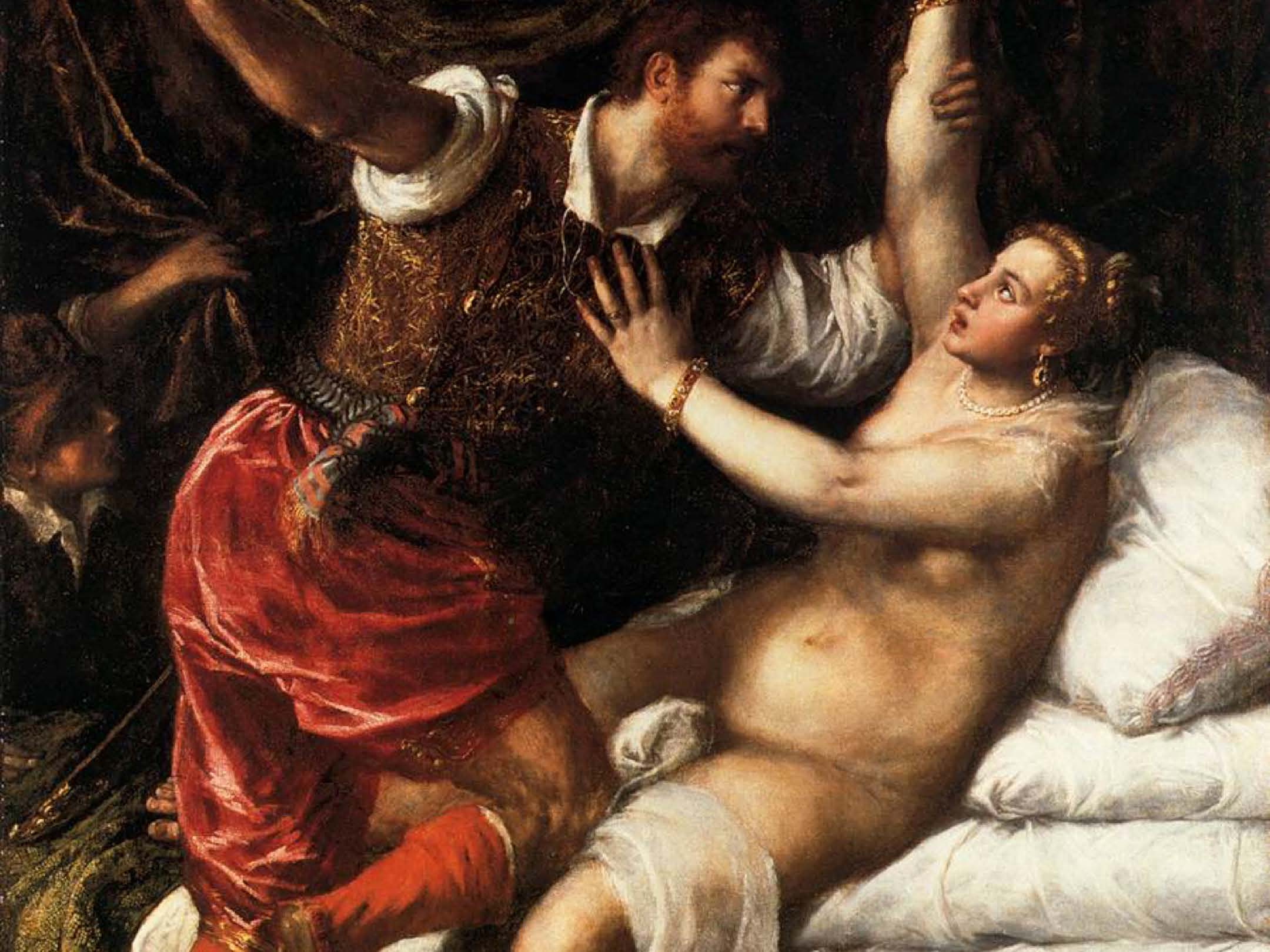
This week we’re starting with the Romans, whose approach to gender we’ll be discussing over the next three weeks.
The Roman perception of the maiden and the matron is very distinctive. What stands out to you about how the Romans understand the responsibilities of the maiden to Roman society? How does it fit in with ideas of gender we’ve studied so far? Also, the stories from Livy give women symbolic importance to the survival of Rome. What do you think these stories are telling us?
I’m looking forward to hearing your takes on the gender roles of men and of women in Roman society. See you Thursday!
Quiz #6 grades and markups posted
31 October 2022
The grades and markups for Quiz #6 are posted on the My Grades page on the course website. I strongly recommend spending a moment to take a look at my commentary on the quiz, as I use these to emphasize the key take-aways from last week’s topics:
- The Quiz Notes for Quiz #6 are live on both the Quiz Notes page and the Print/PDF page.
- The Video Recap for Quiz #6 is live on the Videos page.
Welcome to Week 10!
31 October 2022
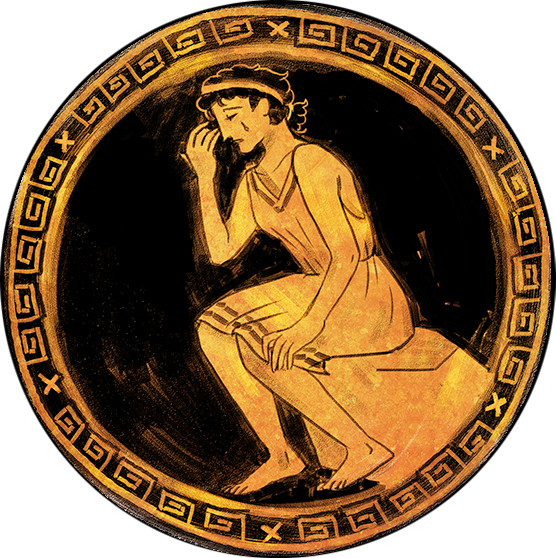
This week we’re talking about understanding gender in classical Athens through the mortal women presented in literature (as opposed to mythology), and toward that end we’re looking at two of the most potent female figures in all of Greek drama, Antigone and Medea. Both women are larger than life in very different ways. I really want to hear what you all thought while reading these plays.
What is it that Antigone is fighting for, do you think? What is Medea fighting for? What are the conflicts in these two plays really about, do you think? What insight can we derive from the memorable endings? Do Antigone and Medea have anything in common? What did you react to while you were reading these plays?
The play Medea is particularly shocking because of what she does and how it ends. Given what Pomeroy talks about and all our previous discussion, what do you think Euripides was trying to say to his fellow Athenians by telling this story? Let me know what you think about all of this.
Looking forward to discussing this with all of you. See you on Thursday!
Quiz #5 grades and markups posted
25 October 2022
The grades and markups for Quiz #5 are posted on the My Grades page on the course website. I strongly recommend spending a moment to take a look at my commentary on the quiz, as I use these to emphasize the key take-aways from last week’s topics:
- The Quiz Notes for Quiz #5 are live on both the Quiz Notes page and the Print/PDF page.
- The Video Recap for Quiz #5 is live on the Videos page.
Images Essay grades and markups posted
25 October 2022
The grades and markups for the Images Essay are posted on the My Grades page on the course website.
If you have any questions about the grades, comments, or deductions, please don’t hesitate to seek me out by email.
Reversible deductions. Some of you may find that you received “reversible deductions” for issues relating to formatting and citations. The good news is, those are points that you can get back. Check the cover page of your markup to see if there are any check marks and points taken off next to the reversible deductions. If there are, I made notes on the cover sheet or in the essay about the issue, and included a handout with the requirements.
Please resubmit your essay to BlackBoard with those problems fixed, and I’ll be in a position to reverse those deductions. Only reversible deductions can be reversed, so don’t resubmit for anything other than reversible deductions.
Missing essays. If you have not gotten your paper in, please do so as soon as you can. In terms of your course grade you’re better off with any grade, even with a lateness penalty, than a zero for the assignment. Remember also that the lateness penalty is capped at a maximum of 30 points, so turning your paper in, even very late, is better than not doing so.
Welcome to Week 9!
24 October 2022
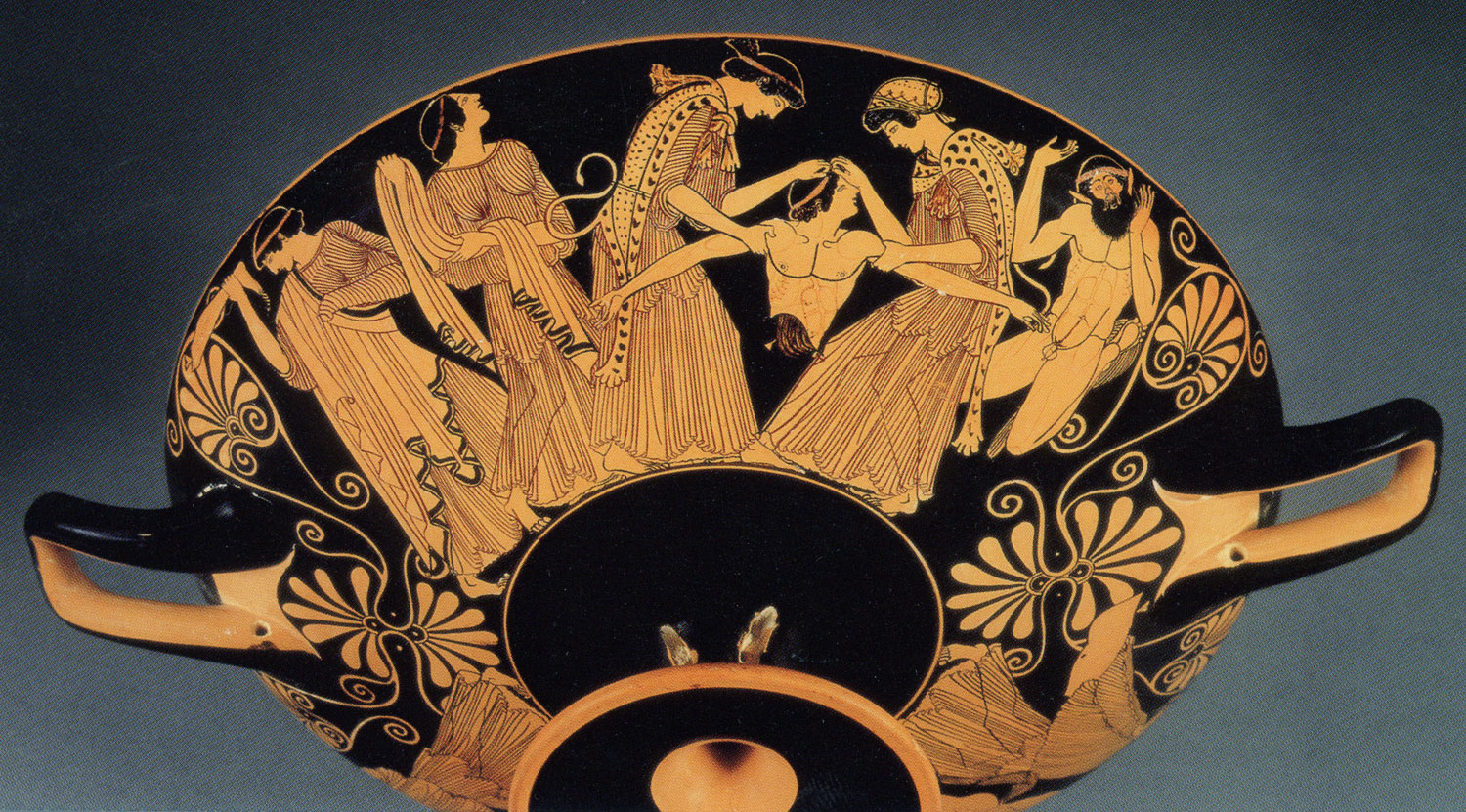
This week we’re trying to take a closer look at the nonpublic side of gender in classical Athens. What role do you think the hetairai really played in Athenian society? Why do you think we focus on them when discussing Athens? What’s your sense of how the Athenians dealt with private sexual conflicts within and between families—what situations stand out to you?
We’re also looking this week at Bacchae, in which a group of women rip a man apart. Why is he, Pentheus, ripped apart in particular? What is this story showing us—empowerment? Retribution? Male pig-headedness (or lion-headedness)? The Bacchic craze was something the Greeks valued—what was its importance, do you think? Within the play, what do you think Dionysos was trying to accomplish? What do you think Euripides was trying to accomplish in telling this story?
We’ve also got a little scene from the Adonis Festival. Is this just a bit of frivolity involving women checking out hot guys (a bit of reversal in Greek literature, but not unheard-of—remember Nausicaa and the beauty-enhanced Odysseus); or is there something more to the telling of this story?
Looking forward to your discussions and reactions. See you Thursday!
Welcome to Week 8!
17 October 2022
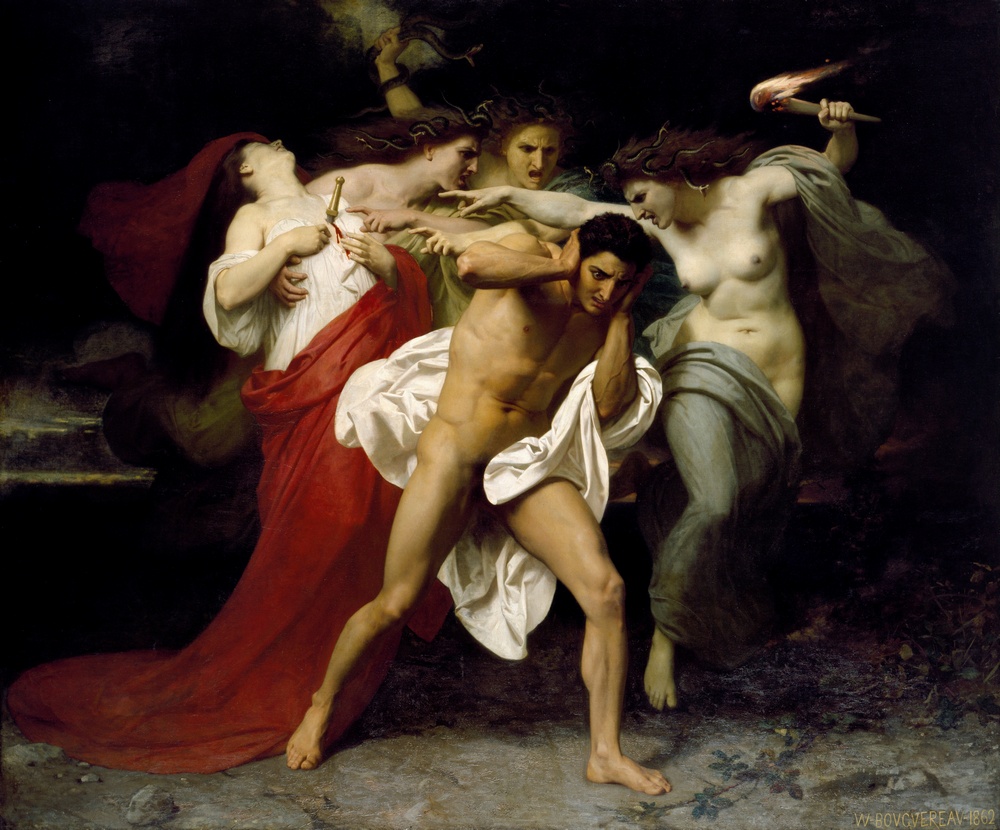
This week our main subject is to focus on women in classical Athens. This is a tough one, because the seclusion of women is a subject that draws a lot of emotional reaction and misunderstanding—and this is one of those topics where Pomeroy definitely has an axe to grind. The articles come into play here, too, especially the Walker article, which deals with some of the facts on the ground about seclusion. Where is Pomeroy coming from when it comes to women in Athens? Given our past discussions, what helps bring about this situation? And is it as bad as it seems to us, or is there more going on that what everybody traditionally says about it?
Also this week we’re looking at the Eumenides, part of the Oresteia trilogy by the tragedian Aeschylos. This is a great one for looking at gods and mortals and how they operate on their own planes. What do you think the play is saying about Orestes having killed his mom? How do the Furies come off, and how do they seem different from Apollo and Athena, who show up at the end? Why do you think the playwright has Athena say the things she does about her final decision? What do you think this play is really about?
Looking forward to discussing all this with you. See you Thursday!
Welcome to Week 7!
9 October 2022
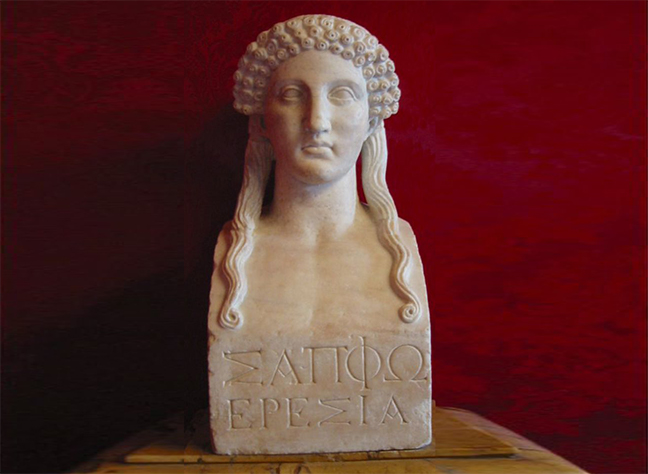
Welcome to Week 7! This week we’re talking about the period after the so-called Greek Dark Age, when from our perspective Hellas can be heard and seen again, with the foundations of Greek culture already laid down in the previous, unseen centuries.
This is the time of the polis—the distinctive, kingless Greek city-state; of colonization, with Greek cities sending their people out into the Aegean, the Black Sea, and the Mediterranean; and of the hoplite warrior. Also during this time: the rise of lyric poetry, a sharp contrast to the epic poetry of earlier times; and pan-Hellenism, the curious sense of commonality that grows among all these city-states with defiantly distinct and competitive identities.
Two writers emerge during this period that are characteristic of the shifting Greek culture. One is Hesiod, who speaks from the point of view of the small landed farmer—unlike Homer, whose perspective was from the top of society down. What does Hesiod have to tell us about what it meant to be Greek, and is it different from the key values present in Homer’s work? His issues with women we’ve already discussed in terms of his complex depiction of Pandora and his admiration of Hekate above other divinities, but here we see a discussion of women in terms of the priorities of a landed farmer. Is Hesiod’s attitude simple misogyny, or can we go deeper? How does his discussion of gender fit in with his broader arguments about what it means to be a good Greek citizen?
The other author is Sappho, the most famous of the lyric poets. What does her poetry tell us about how Hellas is changing from the days of epic poetry told by rhapsodes? How does it fit with the rest of what Greek literature talks about? What is her poetry about, to you? What do you think we can take away from the fact that this towering figure of Greek literature is a woman?
Looking forward to discussing all of this with you. See you Thursday!
Reminder: The Proposal is due Monday, October 17
8 October 2022
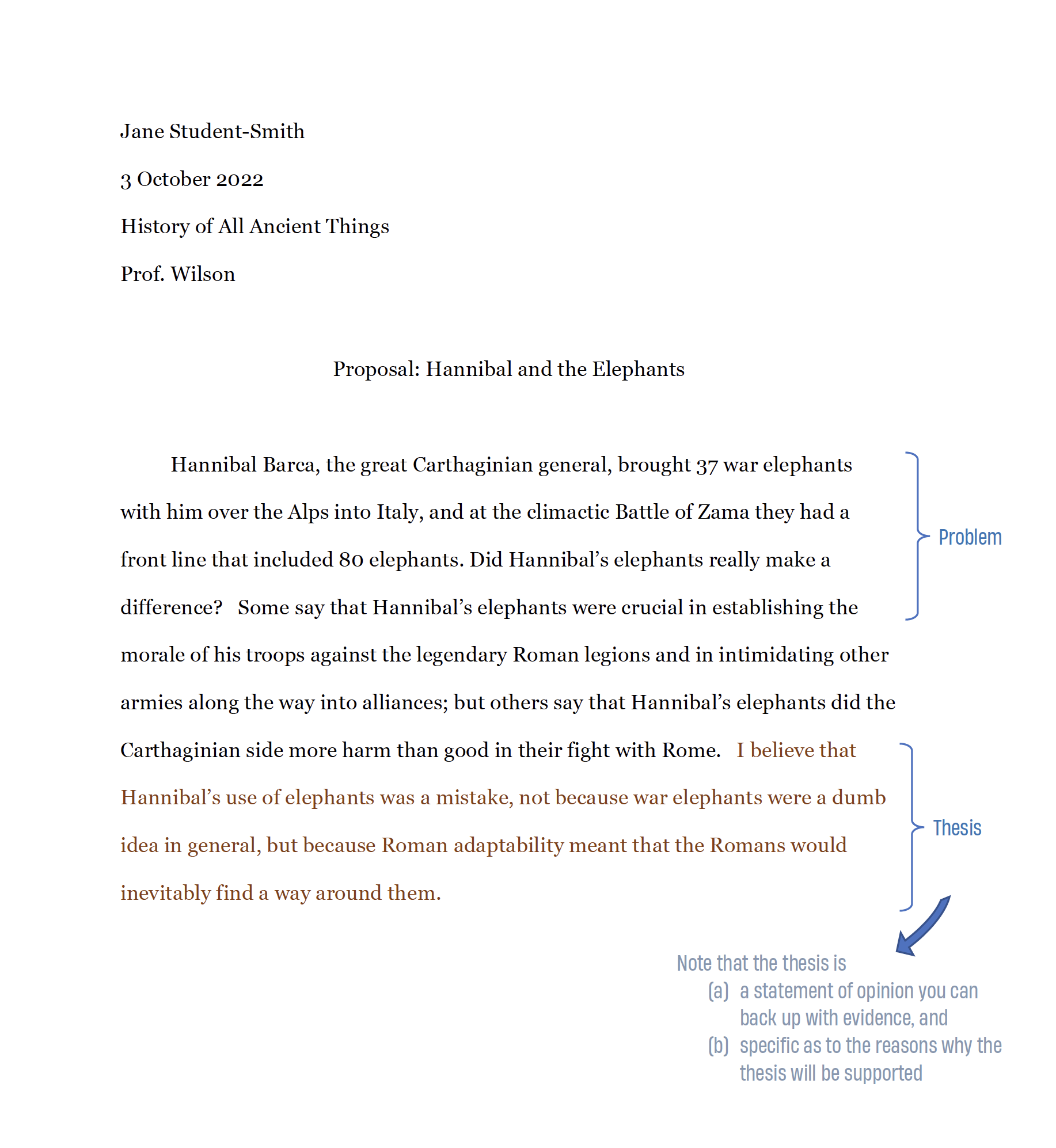
Here are a few brief reminders about the proposal, which is due very soon on Monday, October 17.
I’m looking for: a problem that can be argued; your proposed thesis; and any other thoughts about what you might want to explore or how you think you might go about supporting your argument in the position paper itself. I’ll give feedback on topic viability, scope, and possible primary and secondary sources.
There is also a video on the course website (see the Essays page or the Videos page) that details exactly what I’m looking for. A sample is also posted on the proposal page. I’m happy to discuss possible ideas and approaches in office hours, after class, or by email.
Here’s what the syllabus has for the proposal assignment.
The assignment: The proposal is just a brief one-page preview of your position paper. It should include:
- The topic you think you’ll want to write about and the problem you’re interested in addressing. You should be able to delineate the problem by describing the opposing views people might take. To make sure you have two clear opposing opinions, you might want to express them in the form “Some say… . Others say….”
- Your preliminary thesis statement—in other words, what you think you might be arguing in your paper.
- Your thesis statement, both here and in the final paper, should be a statement of opinion that someone could disagree with. It can take the form of following up the description of the opposing opinions with your own: “I believe….”
- Remember that your thesis is provisional. You can change anything about your approach and interpretation after the proposal; in fact, uncovering information as you do your research makes refining or changing your initial assessments very likely.
Your proposal is structured like the introduction to your final paper, and may serve as the basis for it.
The proposal is not graded, but whether you submitted a proposal on time will be factored into the final grade for the position paper. I will give you feedback on things like the feasibility of researching your topic, whether the scope is too big or too narrow for a paper like this, and some possible sources you might want to look at.
Welcome to Week 6!
3 October 2022
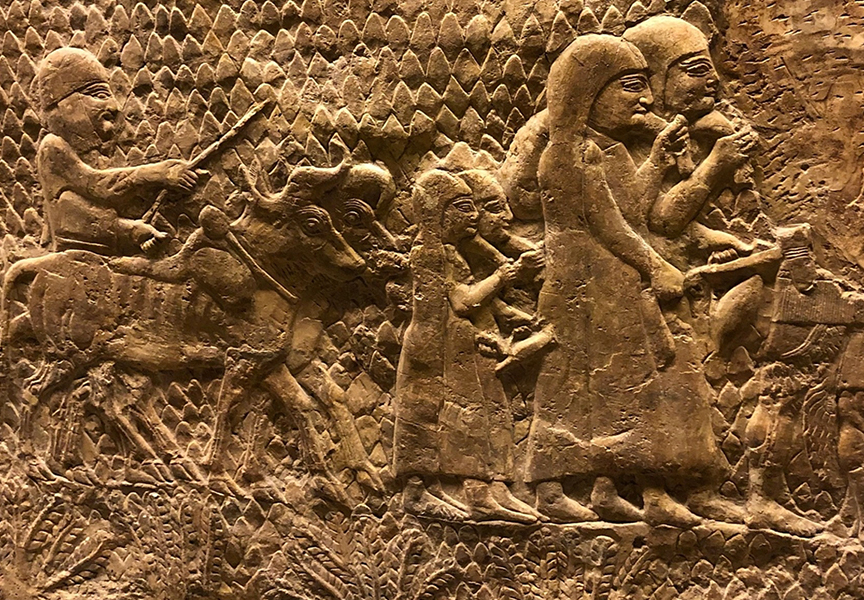
This week we’re stepping away from the Greeks for a moment to talk about the story of the Hebrews.
This is one of those cases where the backstory goes a long way in shedding light on specific and distinctive cultural norms. We’ve already seen how the Sumerians, the Egyptians, and the Greeks had different norms and values about women, mortality, and so on. But they all had two things in common: a homeland, and pagan gods that were rooted in the natural forces of that homeland. With the Hebrew tribes, we see cultural norms defined by exile, war, oppression, and more exile, and an ethnic and religious identity reshaped around a monotheistic god, rejecting paganism and any commonality with pagan peoples.
What do you think most affects their ideas about the role of women? What strikes you about the stories of Esther and Ruth? What kinds of women stand out in the stories preserved in Hebrew and Jewish history?
Looking forward to hearing your reactions and insights. See you Thursday!
Quiz #3 grades and markups posted
29 September 2022
The grades and markups for Quiz #3 are posted on the My Grades page on the course website. I strongly recommend spending a moment to take a look at my commentary on the quiz, as I use these to emphasize the key take-aways from last week’s topics:
- The Quiz Notes for Quiz #3 are live on both the Quiz Notes page and the Print/PDF page.
- The Video Recap for Quiz #3 is live on the Videos page.
No meeting this week
26 September 2022
See you on October 6!
Quiz #2 grades and markups posted
22 September 2022
The grades and markups for Quiz #2 are posted on the My Grades page on the course website. I strongly recommend spending a moment to take a look at my commentary on the quiz, as I use these to emphasize the key take-aways from last week’s topics:
- The Quiz Notes for Quiz #2 are live on both the Quiz Notes page and the Print/PDF page.
- The Video Recap for Quiz #2 is live on the Videos page.
Navigating the course website
21 September 2022
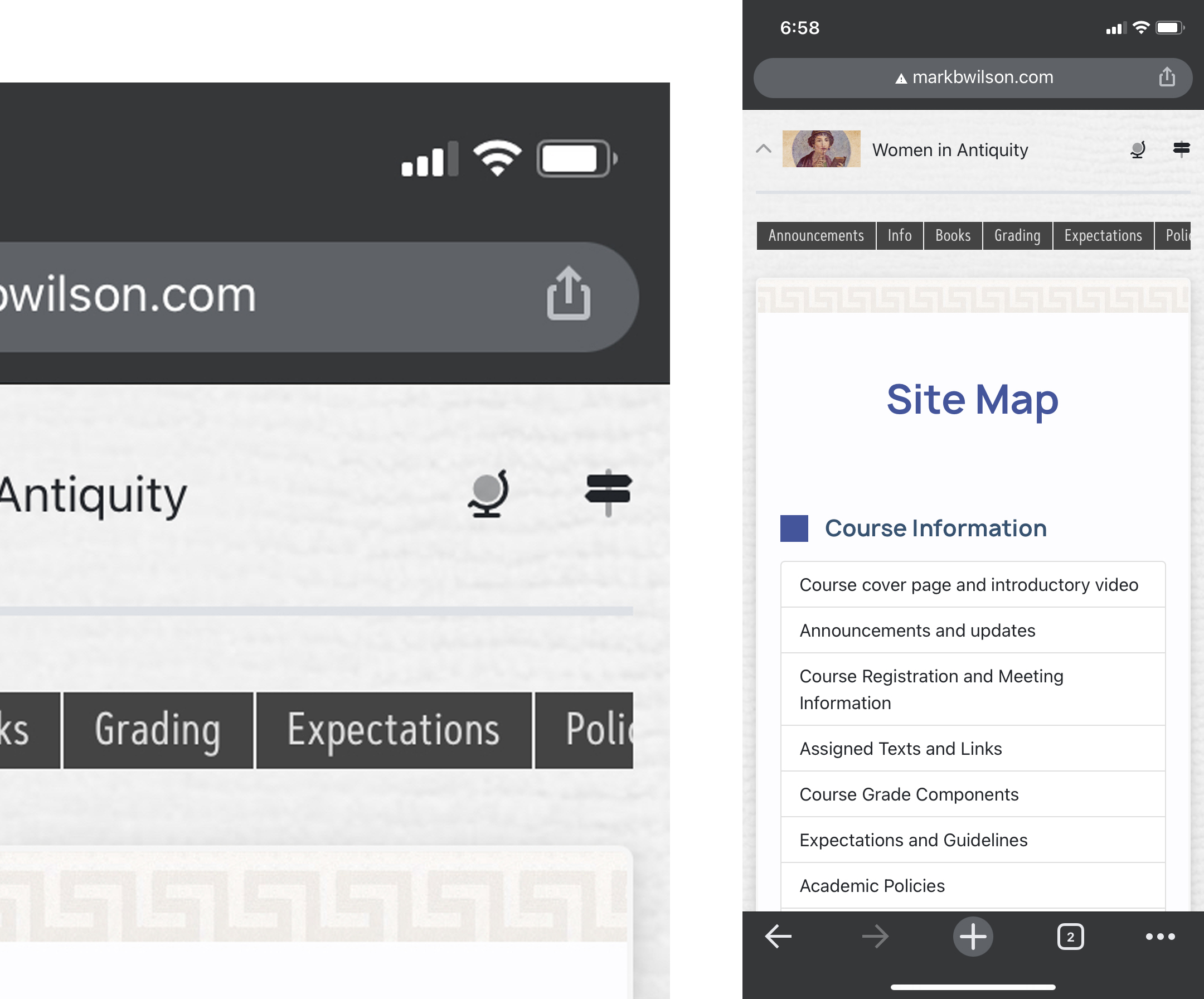
If you’re using the course website on smaller screens, like phones or tablets, you might find the site map a useful way to find the page you need.
The site map icon (which looks like a post with two directional placards on it) is at the top of every page. Tap that and you’ll have a list of all the key pages of the site to scroll through.
In addition, as you may have noticed, that navigation bar—the block of page names at the top of each page—scrolls left and right on smaller screens. If the page you need is out of view, slide the navigation bar left or right.
Remember also that if you want to review any part of the syllabus in a traditional paper format, any page with its own PDF version will also have a printer icon at the top right. All available PDFs are posted on the Print/PDF page.
If you experience any issues with the site, let me know and I’ll do my best to fix them promptly.
Welcome to Week 5!
19 September 2022

This week we’re talking about Homer, whose works are the portal to understanding how the Greeks thought about everything, including gender, since Homer’s works became the baseline for all Greek culture and all study of the Greeks. We’re reading Pomeroy’s analysis of how the women of the Trojan epic were presenting in Homer and perceived by the Greeks, but we’re also reading a few short sections of Homer himself to get a feel for how he talked about the male and female figures who shaped the outcome of the Trojan War in his Epic.
Women are important to Homer—even the war itself is made to be about a woman in Homer. How does Helen come across in these stories? Why do you think she was depicted as the impetus for the war? Do you see the women on the Trojan side (like Andromache, Hektor’s wife, and Kassandra) as being presented differently from the Greek women (like Klytaemnestra)? In the excerpts, how do you see Briseis, Nausicaa, and Penelope? What do you think Homer wanted to say about the mutual responsibilities of men and women in Greek society?
Looking forward to discussing all of this with you. See you Thursday!
Reminder: The Images Essay is due Monday, October 3
19 September 2022
Here are a few brief reminders about the Images essay, which is due very soon on Monday, October 3.
- Watch the video. Make sure to watch the overview video, since that tells you exactly what I am looking for. It’s on the Images Essay page.
- Thesis statement. Make sure you have an introduction with a thesis statement (your argument asserting your position on the question/problem being addressed) and a body that described and discusses three examples from the sources supporting your thesis statement. For models and explanations on how to do this, see “Writing a Position Paper” (a.k.a. “The Elephant Pamphlet”), which is on the Resources page.
- Sources.
- For the museum option, if you can go to a museum in person and view the works directly that is what I strongly prefer, as this option is about your subjective reactions to experiencing the works you are writing about. Remember to choose two works that have the same subject (two little girls, two warriors, two Athenas) but from different times or places so you can talk about the implications of how the same concept was conveyed differently in different times or places.
- For the film option, you need to write about the agenda of the filmmakers and the agenda of the authors of the primary source and how each is using an ancient culture to impress their own beliefs (the filmmakers’ and the authors’) on the audience. If you’re not sure about the primary sources for the film you chose, make sure to come to me and we’ll discuss.
- Requirements for all papers. You must adhere to the requirements for all papers (listed on the Essay Musts page). Not meeting the requirements for all papers will mean a lower grade.
- Template. There is an MS Word template already set up with some of the formatting I require on the Resources page. If you use Word I strongly recommend making use of this template. There is one for Google Docs as well.
- Late papers. As per the syllabus, late papers are marked down by ten points per class meeting, up to a cap of thirty points. Avoid this penalty and block out the time you need to prepare, write, and review your essay so that it can be submitted on time.
- BlackBoard. All essays are uploaded to BlackBoard. Look for “Upload Assignments Here” in the left-hand menu. Your essay needs to be uploaded as a Word (preferred) or PDF file attachment, not pasted in as text submission. If you use a browser-based word processor, you’ll need to download or export to a Word document and upload that.
I’m happy to discuss any aspects of your sources or the essay, so please come to me if there’s anything you’re not sure about. I’m looking forward to hearing your interpretations of your chosen depictions of the ancient world!
Quiz #1 grades and markups posted
15 September 2022
The grades and markups for Quiz #1 are posted on the My Grades page on the course website. I strongly recommend spending a moment to take a look at my commentary on the quiz, as I use these to emphasize the key take-aways from last week’s topics:
- The Quiz Notes for Quiz #1 are live on both the Quiz Notes page and the Print/PDF page.
- The Video Recap for Quiz #1 is live on the Videos page.
Welcome to Week 4!
12 September 2022

This week we’ve got a big topic: How gender plays out among the stories of gods and goddesses in the ancient world.
Here we zoom in on a key theme in this course, and in Pomeroy’s text: how goddesses are portrayed, as contrasts to human behavior and in contrast to the male gods. What stands out to you as the most defining characteristics of goddesses in mythology? What goddesses stand out the most to you, and what about them stands out? Remember, we’re trying to view these ideas from the perspective of people of the time. How did the peoples of these societies see a goddess as being different from a god?
Certain goddesses really stand out, like Athena (corresponding to the Roman Minerva). Why is Athena so special and unlike anyone else in the pantheon? Pomeroy talks about an array of Greek goddesses, and many of them seem to be very potent and distinctive in terms of personality and behavior. Why do you think these goddesses were described that way? Who stands out to you as intriguing, or unfairly overlooked?
Also, I want to talk about specific male/female pairings. How do the myths contrast Zeus and Hera? Or, going even further back, Cronos and Rhea?
And: the earth is associated with female divinities (Gaia, Demeter, Kore). Is that just an analog with the production of life, or is there more to it than that?
Looking forward to your thoughts and insights. See you Thursday!
Welcome to Week 3!
5 September 2022
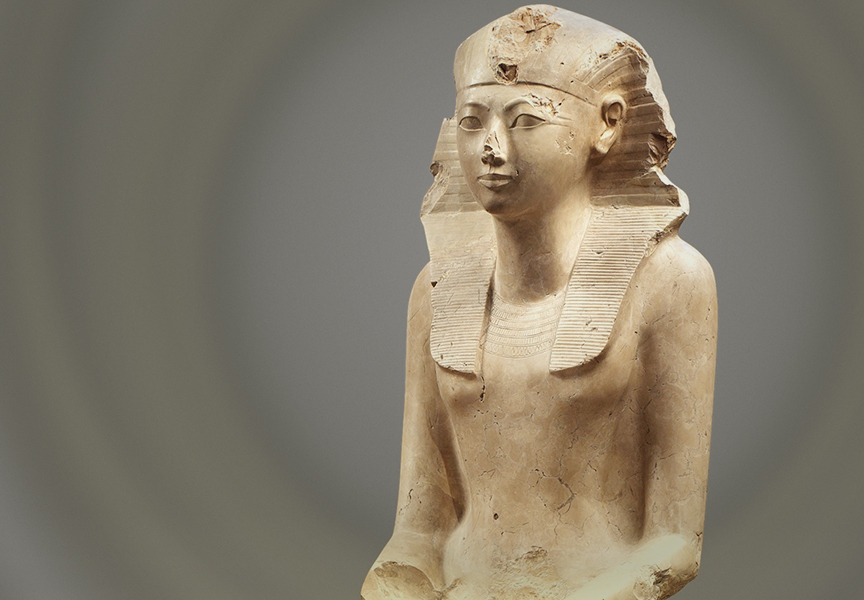
This week we’re talking about Egypt.
There’s a lot to discuss this week. Was Hatshepsut a fluke, or did she really represent something about women in Egypt? What do you think was most important in making Hatshepsut accepted as a ruler? Was her damnatio memoriae—her son’s destruction of her legacy—about female inheritance, or was something else going on? The articles give us a few more vantage points to talk about gender in Egypt. What do think we can say about how different things were for women in Egypt, and why?
With regard to the reading from Roehrig, there’s a “Note” button that gives some advice about approaching this book. It’s long, but it’s mostly pictures, and the tl;dr is, read the six articles, which are shorter than they seem, and skim the rest, which is mainly inventory. Look out for pictures that strike your imagination. What images of Hatshepsut stand out for you the most?
Looking forward to discussing this with you. See you Thursday!
Finally: don’t forget to sign up for your presentations, if you haven’t already! To claim the readings for your presentations, go to the sign-up pages (#1, #2) on the course website. Email me if you have any questions about the presentations or anything else!
Welcome to Week 2!
29 August 2022
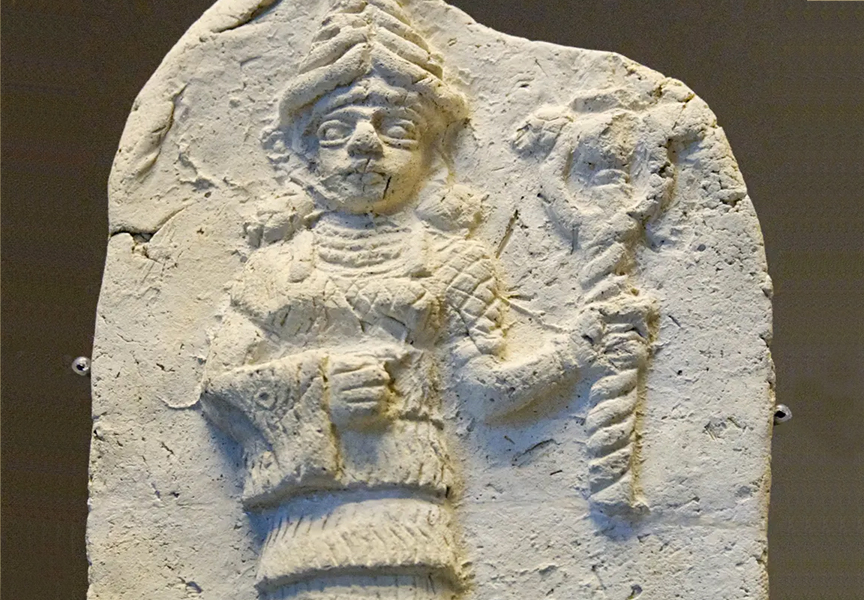
This week we’re talking about one of the oldest civilizations of the ancient world, the harsh lands of Sumer, and their most famous bequest to later generations, The Epic of Gilgamesh. We’re reading a few chunks from it, and although the protagonists of this story are two very manly men, in these passages we get three very vividly drawn women: Shamhat the prostitute, Ishtar the bratty goddess, and Ninsun, Gilgamesh’s mother archetype.
As we talk about this, I’m interested in hearing what stands out to you about these passages. How does the people’s anger at Gilgamesh relate to gender? Why is Shamhat written as being so critical to the story of Enkidu? And why do you think it’s important she’s a prostitute rather than another kind of woman in society? What role does Ninsun play in Gilgamesh’s story? What is Ishtar all about? Given what we see of other women in the Epic, do you think she’s being painted by her actions as a woman, or as a god? And on the testosterone side, what do you think the dudebro attitudes and goals of Gilgamesh and Enkidu tell us about how the author saw the differences between men and women within a community?
We had a great discussion last time, and this time we have some really meaty (or juicy, if you want vegetarian metaphors) stuff to discuss. When we get together this week, I especially want us to talk a lot about Gilgamesh and what it tells us. Also, I want to hear your reactions to the article you read. The discussion on this is important, since only some of us will have read the one you chose. What was the author trying to convince you of? What did you think of his or her arguments, and the evidence used to support it? What insight does this give us into how the Sumerians thought about gender?
Looking forward to hearing your thoughts and reactions. See you Thursday!
Welcome to Week 1
22 August 2022
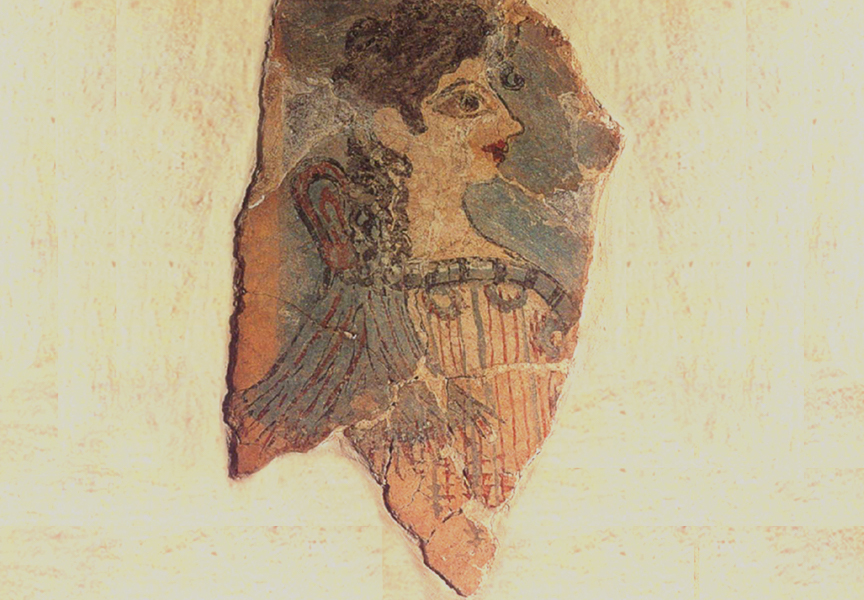
This is just a quick note to welcome you all to the beginning of Women in Antiquity. I’m looking forward to exploring gender in the ancient world with all of you, starting with our first meeting on Thursday. The meeting is in-person, 6:00 – 8:40 p.m., in Carman 211.
Syllabus and video: As a reminder, the syllabus, assignments, and requirements are all on the course website, which is on my website, markbwilson dot com. Make sure you’ve looked through the site and that you’ve watched the welcome video, which talks about how the course works and answers some common questions.
Books: Also make sure you have the book. The Pomeroy will be getting regular use starting in a couple of weeks, and it shouldn’t be hard to find. The reading assignments on the Schedule page of the website are what you need to have read (and thought about) before coming to class.
Email me: Most of you replied back to the welcome-to-the-course email I sent you after you enrolled, confirming that I have a good email address for you. If you didn’t, could you do me a favor and email me now at mark.wilson@lehman.cuny.edu and let me know that I can use this address, or that that a different email is better for you? Thanks.
Sign ups: There are two sign-up pages on the course website, one for a primary source presentation and one for a secondary source presentation. Everyone needs to sign up for one of each for the semester. You can get that out of the way now and choose the ones that seem interesting to you. If you have questions, we’ll talk more about presentations and the rest of the course components on Thursday.
Campus access: You should have received the email from Rene Rotolo underlining what you need to know about campus access. The vaccination, testing, and ID rules are spelled out there, and if you’re a returning student they’re not much changed. One thing that’s different this time: Gate 13—the southeast gate by the Student Life Building on Jerome, and the gate most convenient to Carman Hall from the south—will be closed for the next few weeks. For now, access to campus will be via the main west and north gates (Gates 5 and 8) only. When turning up for our class meetings it might make sense to try to arrive on campus a bit early, as there may be lines at the entrances to campus.
That’s it for now. Let me know if you have any questions. I’ll see you all on Thursday!
Welcome to Women in Antiquity!
1 August 2022
I’m looking forward to a great semester exploring ideas of gender in the ancient world.
For the Fall semester, the course will be in person. Physical attendance in our class meetings is a critical part of the course, so if that’s not something you’re up for this course may not be for you.
Right now, I need you to do three things.
First, look over the course web page, which will be our base of operations. Watch the quick welcome and orientation video (also linked below). Look through each of the pages on the website to see how the course will work, and make sure to click through to the schedule page to see how the readings, videos, and discussions are set up. Any questions about how it works, please send me an email.
Second, get the books now if you can. A lot of you will be ordering books online, and you need to make sure you have the books and are ready to go when the course starts on August 25. On the “Books” page I’ve tried to give you lots of different options for getting what you need, but consider ordering now if there’s going to be any kind of shipping involved. (If you come across a legitimate online/e-text version of one of the assigned readings that’s not already listed, please let me know.)
Finally, send me an email so that I know I have a working email address for you. You can just send a blank email, email and say “hi”, or email with a question or concern, but I want to make sure I can contact everyone. If you receive an email from me but there is an email address you prefer I use instead of this one, please definitely reply and tell me that.
Email me anytime with questions. I’m looking forward to starting our journey together.
Welcome to Women in Antiquity!
8 June 2022
This where I’ll be posting announcements, updates, and important information for each week of the course. Bookmark this page your entry point to the course website to make sure you’re up to date.